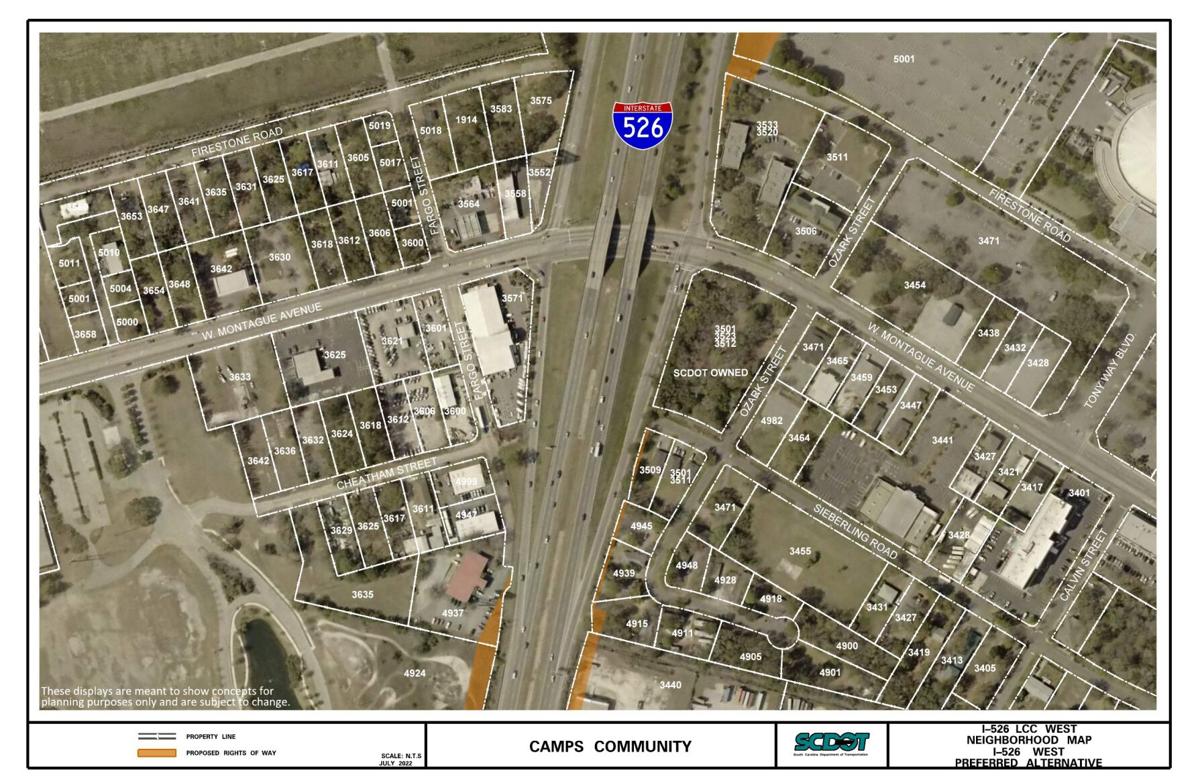North Charleston neighborhoods that will take the brunt of impacts from the Interstate 526 widening and reconstruction are starting to see an array of efforts taking shape to compensate them for being uprooted.
College scholarships and job programs are already being offered, and plans to build new affordable homes — 156 “residential relocations” are expected — are moving forward as part of the Lowcountry Corridor West plan.
A deadline to apply for this year’s scholarships is days away.
Lowcountry Corridor West is the plan to widen I-526 to eight lanes from Virginia Avenue in North Charleston to Paul Cantrell Boulevard in West Ashley, and redesign the congested interchange of Interstates 26 and 526.
The $3 billion construction project — up from an estimate of $1.1 billion five years ago — could cause frustration for motorists once construction begins in 2029. But for many people, it will mean the loss of homes or businesses, mostly in North Charleston and particularly in what the S.C. Department of Transportation calls Environmental Justice Communities.
The interchange and widening work will require land, and much of it will come from the North Charleston neighborhoods of Ferndale, Highland Terrace, Liberty Park and Russelldale.
The communities of Joppa Way, Camps, Wando Woods and Charleston Farms are also included in some mitigation initiatives.
They are all lower-income neighborhoods previously impacted by the construction of the two interstates, which cut into those communities and left many remaining homes very close to the highways.
The disproportionate burden on those neighborhoods prompted the state and federal governments to take special measures costing an estimated $146 million.
In Russelldale, every property on the north side of Russelldale Avenue — including several apartment buildings, trailer homes and the area’s community center — will be needed to widen I-526 according to DOT’s plans.
Across the highway in Liberty Park, more than three dozen properties along both I-526 and I-26 will be needed for the road project along Margaret Drive, Deacon Street and the western ends of Elder Avenue, James Bell Drive and Taylor Street.
Tim Bryant has lived in a mobile home on Deacon Street since 2005. He’s seen the maps at the project community office at 5605A Rivers Ave. and knows what’s coming.
Byrant, who attended an open house at that office April 27, said he’s heard about plans to build new and affordable homes as part of the mitigation effort and hopes he’ll be able to move to one of those in the community.
“I don’t want to move any farther out,” he said.
The Lowcountry Corridor West is expected to require land that’s now occupied by 43 single-family homes, 102 multi-family units such as apartments and townhomes, 11 mobile homes, 28 commercial buildings housing 71 units, one church (Enoch Methodist), 20 billboards, two cell towers and two recreational properties.
Instead of simply paying property owners for land and homes that stand in the way of the project, the DOT is paying for 45 new houses and 100 apartments to be constructed in or near the same communities. First priority will be given to residents displaced by the road project.
“We are purchasing lots currently,” Project Director Kit Scott said.
So far DOT has acquired 11 lots for future single-family homes in Ferndale and plans to buy 34 more in the four most highly impacted communities that account for 95 percent of the residential relocations. There’s not yet a site for a 100-unit apartment complex that’s also planned, but proposals are due this summer, Scott said.
DOT is paying to replace two community centers with new ones, in Russelldale and Highland Terrace, is funding higher education scholarships and job training programs, extended rent supplements for displaced tenants and is offering a first-time homebuyer grant program.
Stormwater improvements, neighborhood traffic calming, shared-use paths, improved lighting, air quality monitoring and other steps are also planned.
Applications for scholarships this year, worth up to $5,000 for those graduating high school in 2024, are due May 10. For more information, call 843-258-1135, email info@526Lowcountry Corridor.com or visit the project community office in the Gas Lite Square shopping center.
There’s also a May 17 deadline for rising high school students to apply for a free three-week summer program to learn about careers in transportation at Trident Technical College.
The mitigation plan followed many community surveys and meetings where residents of the most impacted neighborhoods were asked what they would most like to see. One finding was that out of potential mitigation-related amenities, after-school programs and financial literacy classes scored the highest, and “introduction to golf” the lowest.












